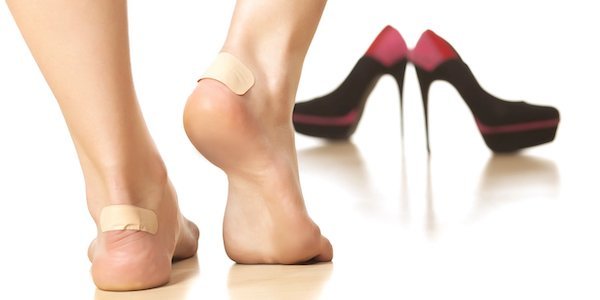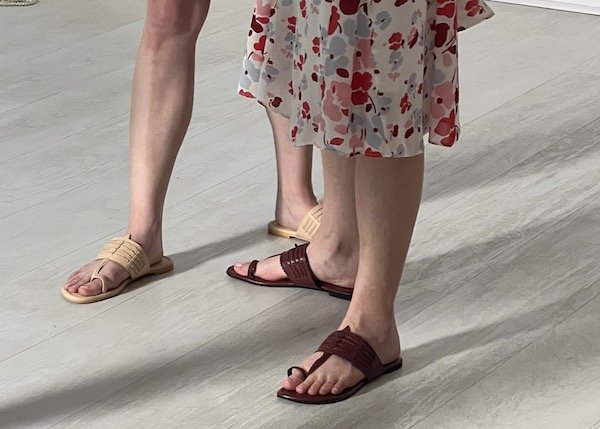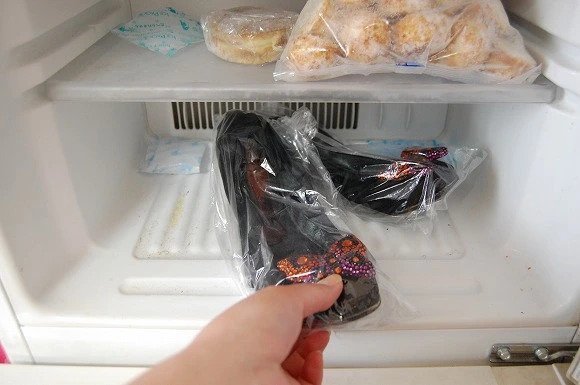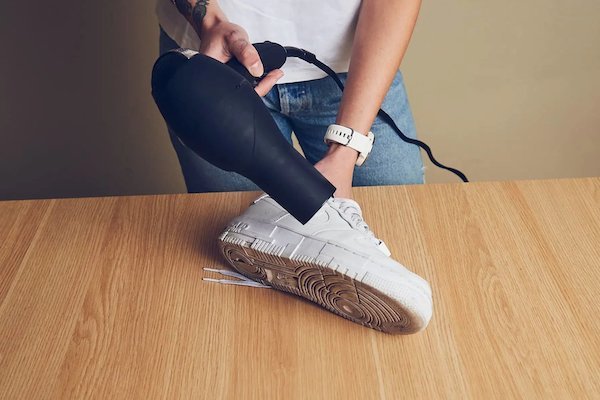
( Image Credit: Source Name / Google Images )
The idea of buying new sandals and expanding your shoe collection sounds exciting, but the discomfort and pain that comes along with wearing them for the first time can detract from the experience. Breaking in your new sandals need not be such a torturous encounter regardless of its material or style. They can be molded as per the shape of your feet with a few simple tricks. In this article we will share some effective tips that will help you break in your brand-new sandals without having to face painful blisters or swollen ankles.
How Long Does It Take To Break In New Sandals
The quality, style, fit, gait, and environment in which sandals are worn all determine the duration of the break-in period. Typically, it takes about 3 to 4 weeks to break into new sandals, but you can expedite the process by using certain at-home remedies to relieve any discomfort. It's important to keep this timeframe in mind and plan ahead, ensuring that you break in your new sandals before wearing them to any upcoming events that involve extensive walking.
Kosh-a's faux leather sandals are designed to be flexible from the moment you put them on, effortlessly conforming to the curves of your feet. Crafted with breathable materials and a flexible style, they provide exceptional support and minimize the risk of experiencing any discomfort. Meanwhile, if you still experience soreness on your feet, there are some effective methods to accelerate the break in process and reduce pain.
Tips To Break In New Sandals Without Pain
1.Make Sure The Size Fits You Right

Selecting the right size for your sandals is one of the most crucial steps for ensuring long-lasting comfort. Poorly fitting sandals generally don't break in correctly and might cause prolonged periods of pain and suffering. Take the time to determine your correct size or consider exchanging them if necessary. By following Kosh-a's informative size guide, you can ensure a perfect fit for your sandals from the start, allowing you to experience maximum comfort right away.
2. Determine The Hot Spots

( Image Credit: Source Name / Google Images )
To determine the hotspots, wear your new sandals and walk around a bit. This will help you pinpoint the zones of discomfort, with the most obvious parts being the hardy heel and the sides of the sandal. You can soothe these tormenting hot spots and lessen the discomfort by gently kneading and massaging the affected areas with your bare hands or by pressing them with a spoon. Wearing bandages or anti-blister balm can help protect your feet from developing blisters by preventing friction on the vulnerable areas.
3. Use Ice To Break In

( Image Credit: Source Name / Google Images )
Another way to accelerate the break in period of your brand-new sandals is by placing water-filled plastic bags inside them and then leaving them in the refrigerator overnight. The water freezes and expands, stretching out the close-ended areas making it more flexible. This method needs proper monitoring since you wouldn't want it to be overstretched while also making sure it has adequate water to actually show some results. The following morning, you will have perfectly shaped, ice-cold sandals that are summer-ready.
4. Apply Heat Treatment

( Image Credit: Source Name / Google Images )
Applying heat treatment helps leather or faux leather to expand and stretch better. All you need for this step is a blow dryer. Put on some warm socks and slip on your new pair of sandals. Keep your dryer at the highest temperature and place it on the area that feels the tightest. Make sure to hold it a few inches away from the sandal for about 30 seconds before moving onto the next spot. It is important to be careful during such treatments since heat can damage the synthetic material or burn your feet if applied too closely for a prolonged period of time. After you have heated all the uncomfortable areas, walk around for 10-15 minutes while the sandal is still hot and flexible, allowing the material to conform to the shape of your feet.
5. Bend Stretch The Hardy Sole
A sturdy sole can occasionally make new sandals feel stiff and uncomfortable by continually chafing against your heel. Therefore, it is important to soften the sole of your new sandals to prevent friction. Apply some heat on the sole with a blow dryer. After it is moderately heated, hold the front and back of the sandal and give it a gentle twist, especially around the heel. You will gradually start to observe the softening of the sole with continued application, producing the desired benefits. Be certain not to overdo it as excessive treatment can affect the structure of your new footwear.

( Image Credit: Source Name / Google Images )
Enjoy Optimal Comfort With Kosh-a’s Sandals and Wedges
Inspired by the traditional Kolhapuri designs and handcrafted by Indian artisans, faux leather sandals and wedges offered by Kosh-a provide you a variety of styles without compromising on comfort. Not only are these sandals naturally flexible, but they also offer outstanding foot support, allowing you to walk for extended periods of time with extreme ease.
FAQs
How do you break in sandals fast?
Wear them for short periods initially, gradually increasing the duration to allow your feet to adjust comfortably.
How do you break in a new pair of sandals?
Start by wearing them around the house for short periods and gradually increase the duration to help your feet adjust to the new fit.
How do I stop my feet rubbing in my sandals?
Apply moleskin or adhesive bandages to areas where your feet rub against the sandals to reduce friction.
How do you prevent blisters from new sandals?
Wear blister-prevention products, such as moleskin or gel pads, on areas prone to friction to protect your skin from rubbing and blister formation.
How to break in shoes that rub your heel?
Try using heel pads or cushions to provide extra padding and reduce rubbing on your heels.
How to break in leather shoes quickly?
Apply a leather conditioner or moisturizer to soften the leather and then wear the shoes with thick socks to stretch them out.
How to break in leather shoes without wearing them?
Use a shoe stretcher or stuff the shoes with newspaper to help stretch the leather without wearing them.
How to break in new shoes fast?
Wear them for short periods initially, gradually increasing the duration, and consider using shoe stretchers or wearing thick socks to speed up the process.
How to break in sneakers?
Wear them for short periods initially, gradually increasing the duration, and consider using shoe stretchers or performing gentle exercises to help loosen them up.
How to break in shoes that rub your toes?
Apply moleskin or gel cushions to protect your toes from rubbing, and consider using a shoe stretcher or opting for a wider shoe size.
How to break in new heels?
Start by wearing them at home for short periods, practice walking in them on carpeted surfaces, and gradually increase the time and distance you wear them to get used to the heel height.


 Jul 07, 2023
Jul 07, 2023
 Jul 02, 2023
Jul 02, 2023
